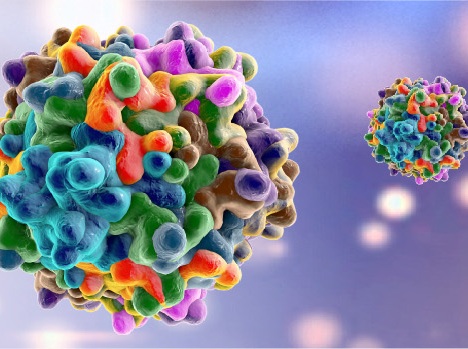Atsena Therapeutics, a clinical-stage gene therapy company, is pioneering a breakthrough approach to treat X-linked retinoschisis (XLRS), a genetic eye disorder primarily affecting males. The company has launched its Phase I/II LIGHTHOUSE study, targeting male patients aged 6-64 who carry pathogenic or likely pathogenic mutations in the RS1 gene. The trial’s inaugural patient has been successfully dosed with ATSN-201, a novel gene therapy utilizing spreading capsid technology known as AAV.SPR.
Chief Medical Officer Kenji Fujita, MD, emphasized that this advancement could revolutionize not only XLRS treatment but also other inherited retinal diseases. Mark Pennesi, MD, PhD, of Oregon Health & Science University, stated that the lack of existing treatments and the limitations of prior gene delivery methods make this study a potentially major therapeutic breakthrough.
AAV.SPR technology differentiates itself by facilitating lateral spread from the subretinal injection site to the central retina. This is critical for efficient gene delivery to photoreceptors and mitigates surgical risks like foveal detachment, which are commonly associated with eye disorder therapies. Preclinical studies have shown promising results, demonstrating AAV.SPR’s ability to transduce foveal cones effectively without causing inflammation, outperforming standard vectors like AAV5 that are confined to their initial injection sites.
The study aims to impact approximately 30,000 males in the U.S. and EU suffering from XLRS, which causes a splitting of the retinal layers and leads to uncorrectable impaired visual acuity. With AAV.SPR’s promising preclinical results, including its efficient transduction of the central retina where schisis cavities are prevalent, the LIGHTHOUSE study represents a significant step towards combatting XLRS-induced blindness and similar disorders.

Check out our AAV capsid engineering service to expedite your gene therapy research
PackGene is a CRO & CDMO technology company that specializes in packaging recombinant adeno-associated virus (rAAV) vectors. Since its establishment in 2014, PackGene has been a leader in the AAV vector CRO service field, providing tens of thousands of custom batches of AAV samples to customers in over 20 countries. PackGene offers a one-stop CMC solution for the early development, pre-clinical development, clinical trials, and drug approval of rAAV vector drugs for cell and gene therapy (CGT) companies that is fast, cost-effective, high-quality, and scalable. Additionally, the company provides compliant services for the GMP-scale production of AAVs and plasmids for pharmaceutical companies, utilizing five technology platforms, including the π-Alpha™ 293 cell AAV high-yield platform and the π-Omega™ plasmid high-yield platform. PackGene’s mission is to make gene therapy affordable and accelerate the launch of innovative gene drugs. The company aims to simplify the challenging aspects of gene therapy development and industrialization processes and provide stable, efficient, and economical rAAV Fast Services to accelerate gene and cell therapy development efforts from discovery phase to commercialization.
Related News
Sangamo Therapeutics Secures Accelerated Approval Pathway for Gene Therapy in Fabry Disease
Sangamo Therapeutics has announced a major advancement in its gene therapy program for Fabry disease, as the U.S. FDA has provided a clear pathway for Accelerated Approval. This decision could potentially speed up approval timelines by three years, with a Biologics...
[2024/10/18] Gene and Cell Therapy- weekly digest from PackGene
FeaturedNewsArticlesPackGene's NewsletterReceive the latest news and insights to your inbox.About PackGenePackGene Biotech is a world-leading CRO and CDMO, excelling in AAV vectors, mRNA, plasmid DNA, and lentiviral vector solutions. Our comprehensive offerings span...
GSK sues Moderna over mRNA vaccine patents, seeks ‘reasonable royalty’
GSK on Tuesday unveiled a lawsuit filed against Moderna in Delaware federal court, alleging that its patented inventions provide the “foundation” for Moderna’s mRNA vaccine portfolio. GSK said it’s looking to recover “a reasonable royalty” for Moderna’s tens of...
Gene Therapy Automatically Converts Omega-6 to Omega-3 Fatty Acids in the Body
Shriners Children's Develops New Technology to Prevent Childhood Obesity ST. LOUIS, Oct. 16, 2024 /PRNewswire/ -- According to the Centers for Disease Control, nearly 20% of children and teens are considered obese. Research shows it can have a dramatic impact on a...
Related Services

Plasmids GMP Services
Multiple scales & grade of solutions of various kind of plasmids suitable for multiple treatments in a fast and cost effective way.
READ MORE

AAV GMP Services
Ranging from small-scale AAV production, to large-scale AAV cGMP manufacturing for animal studies.
READ MORE

Technology Platforms
PackGene’s proprietary π-Alpha™ 293 AAV High-yield Platform increases AAV production by 3 to 8 times that of traditional platforms.
READ MORE

